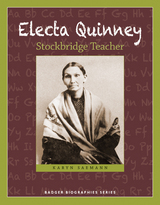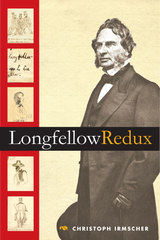
Electa Quinney loved to learn. Growing up in the early 1800s in New York, she went to some of the best boarding schools. There she learned how to read, write, and solve tough math problems—she even learned how to do needlework. Electa decided early on that she wanted to become a teacher so she could pass her knowledge on to others.
But life wasn’t simple. Electa was a Stockbridge Indian, and her tribe was being pressured by the government and white settlers to move out of the state. So in 1828, Electa and others in her tribe moved to Wisconsin. Almost as soon as she arrived, Electa got to work again, teaching in a log building that also served as the local church. In that small school in the woods, Electa became Wisconsin’s very first public school teacher, educating the children of Stockbridge-Munsee Band of the Mohican Indians as well as the sons and daughters of nearby white settlers and missionaries.
Electa’s life provides a detailed window onto pioneer Wisconsin and discusses the challenges and issues faced by American Indians in the nineteenth century. Through it all, Electa’s love of learning stands out, and her legacy as Wisconsin’s first public school teacher makes her an inspiration to students of today.

Volumes III and IV of this edition bring together all the extant letters of Henry Wadsworth Longfellow for the period 1844-1865, most of which have never before been published. These letters carry Longfellow through the remarkable period when he was gaining renown both at home and abroad as the poet laureate of America. His influence swelled with the publication of such works as Evangeline, The Song of Hiawatha, The Courtship of Miles Standish, and Part One of Tales of a Wayside Inn. During these twenty-two years his correspondence proliferated, reaching at least 4000 letters, of which 1500 are known to have survived and are reproduced in these two volumes.
The letters offer further insight not only into the poet's personal life but into his time as well. They document the manifold burdens placed on a popular man of letters, from responding to pleas for advice from unpublished poets to dealing with critical attacks on his own poetry to warding off the importunities of scores of admirers.
The letters further reveal a political interest not hitherto suspected in Longfellow. His exchanges with Senator Charles Sumner shed light on the political dramas of the day, including presidential elections, the Mexican War, the slavery controversy, the founding of the Republican party, and the Civil War. From a social viewpoint, the letters provide an absorbing account of the settled and elegant life of a member of the Boston-Cambridge upper class, into which Longfellow had moved with his marriage to Frances Appleton. They also reveal him as a warm-hearted family man, devoted to his wife and children and solicitous for the welfare of an unhappy brother, a widowed sister, and two wayward nephews.
The letters of Volume III span the publication of five volumes of verse, three anthologies, and a novel. They document the numerous private events that vied with literary production for Longfellow's attention, such as the birth of his six children and the complicated summer migrations to Nahant or Newport. They also follow Longfellow through his resignation from the liaryard professorship in 1854, which was prompted by a desire to devote himself more fully to writing.
Andrew Hilen, who is author of Longfellow and Scandinavia and Professor of English at the University of Washington, has included numerous contemporary photographs to illustrate the letters. His scrupulous annotations supply relevant identifications of individuals, explain allusions, and provide information regarding the addresses of letters, endorsements, postmarks, and the location of manuscripts.

READERS
Browse our collection.
PUBLISHERS
See BiblioVault's publisher services.
STUDENT SERVICES
Files for college accessibility offices.
UChicago Accessibility Resources
home | accessibility | search | about | contact us
BiblioVault ® 2001 - 2024
The University of Chicago Press









